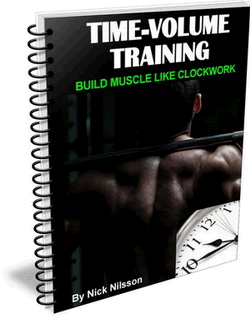By Krisna Garcia
Rowing has fast-tracked itself from being a mostly collegiate sport to an all-in-one total body workout many people enjoy in a gym or at home.
Providing low-impact, high caloric burn, using a rowing machine for cardiovascular health is not only smart, it’s enjoyable. Many an experienced rower will tell you there’s nothing quite like syncing into the rhythm of each drive, whether the strokes are being done in the water or on an ergometer (an indoor rowing machine). Learning proper technique from the start will help you row better and faster in the long run. It will also help prevent injury and keep you from developing bad technique habits that are difficult to break.

But knowing the technique isn't enough. If you’re considering using an indoor rowing machine, there are some basics you’ll need to understand to make an informed decision on what kind of rower to use and/or purchase.
Resistance
Obviously, an indoor rowing machine must provide some type of resistance to simulate the resistance of rowing in actual water. This resistance can come from a number of sources. Here are the most popular.
-
Flywheel rowing machines
A flywheel rowing machine offers a similar feel to outdoor rowing and depends on a fan to create resistance during the pull and drive. When a rower pulls the handle, the chain attached to the handle spins a wheel with attached fan blades creating resistance.
-
Electromagnetic rowing machines
Providing a rowing experience quieter than any other, an electromagnetic rowing machine uses a magnetic braking system to create resistance during the stroke. These machines are known for providing a near-silent rowing experience with a smooth and dependable stroke. These rowing machines based on magnetic resistance are available utilizing only magnet resistance or a combination of magnetic and air resistance.
-
Water rowing machines
Water rowers use a small tank filled with water and a fan with an oar like blades to create drag and resistance. When the rower pulls, the blades of the fan meet resistance in the water tank. For more resistance, a user need only pull harder. This indoor rower is also very silent when in use.
-
Hydraulic Rowing Machine
The hydraulic rowing machine is maybe the best choice for small places, or if you don't have much budget for it. Hydraulic rowing machines receive its tension from the amount of air or fluid that’s compressed with a cylinder or piston, and can be adjusted by most models of indoor rowers. Hydraulic based indoor rowers differ from air, magnetic and water rowers because the rowing machine technique doesn’t allow you to pull in a straight line. Because of the hydraulic piston you might not be able to perform a natural rowing motion and could hardly synchronize your arm and leg movements together.
Size
Of great importance when considering the purchase of an at-home rower is size. While most rowers are relatively close in size, some require more space and are not easily stored.
Additionally, some rowers are heavier than others. The lightest rowers will feature an aluminum frame and a flywheel that doesn’t require water. The water in a water rower adds weight and can sometimes make the rower itself more difficult to store. Additionally, many water rowers are crafted from wood, adding additional weight.
Storage
Storage is an important basic to consider, especially if purchasing an indoor rowing machine for at-home use. You’ll need to consider the total footprint of the rower as placed in position for rowing, as well as the footprint needed for storage, which will include the need for extra height.
Most rowers have the capability to be stored in an upright position, which saves floor space but does require a location that allows it to stand end on end.
Comfort
You’re going to be spending a great deal of time on your rower, and making sure you are completely comfortable is of utmost importance. Most obviously, the seat should be ergonomically designed to cushion the rower, but it should also move freely and smoothly down the slide.
Additionally, the footplate should be adjustable so that the rower can easily manipulate the straps-ins and plate size to fit their feet. If these elements are not comfortable, rowing will not be comfortable, and the likelihood that the rower’s form will suffer is eminent.
Indoor rowing is an excellent way to maintain cardiovascular health. Unlike other forms of static cardio activity, indoor rowing uses more muscle groups, providing a total body workout. Rowing is also a low-impact sport, which does not place undue stress on joints. Knowing the basics of what to look for in an indoor rowing machine can mean the difference in actually enjoying a rowing workout and dreading it. Finding the indoor rowing machine that meets your needs is important to ensuring the rower will be used and enjoyed for years to come.
![]()
More From Fitstep.com
| Stink Training for Bringing Up Weak Bodyparts | |
| Fat Loss Circuit Training With Dumbbell Crawling | |
| The Great Big List of Calorie-Free Foods | |
| 4 Tips For Larger, Firmer, Rounder Glutes |
Share This Page...
---
Home -> Fitness For Beginners -> Articles -> Rowing Machines

